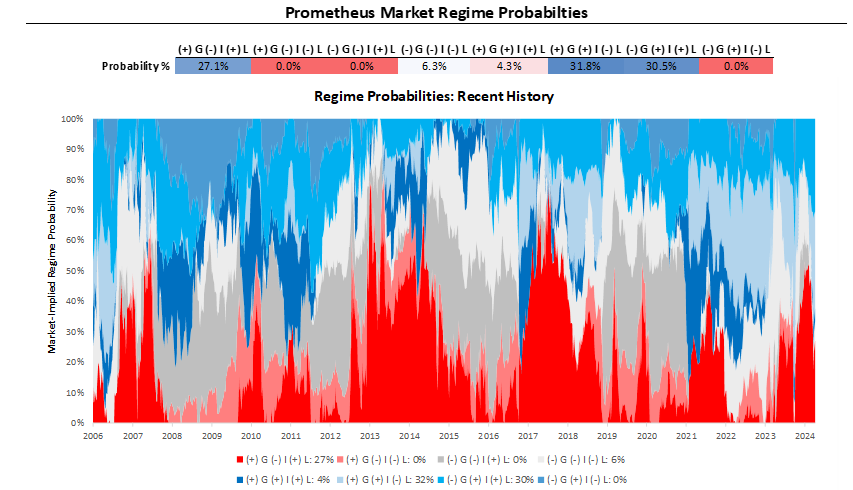What's Moving Markets?
Slowing Data Momentum
This publication is a short excerpt from our weekly Prometheus ETF Portfolio note. While we reserve our forward-looking views on macro and portfolio construction to paid subscribers, we offer our high-level diagnostic of macro conditions here as we aim to offer value to the broader public.
For those unfamiliar: The Prometheus ETF Portfolio aims to allow everyday investors to access an investment solution that combines active macro alpha, passive beta, and strict risk control, all in an easy-to-follow, low-turnover solution. We aim to achieve strong risk-adjusted returns relative to cash, with limited capital drawdowns in depth and duration. We do this in a highly accessible package, which rotates between five highly liquid ETFs, readily available to any investor with a brokerage account. You can sign up for it here:
Let us dive into our assessment of macroeconomic conditions:
Over the last week, markets moved to price disinflationary outcomes, with the odds of falling growth rising. Inflationary pricing has now grown to dominate cross-asset pricing on a trending basis.
This dynamic currently has only modest support from fundamental conditions. If this pricing solidifies, it will likely weigh on bonds and at the extreme weigh on stocks.
Economic data momentum fell this week, entering the second quartile. This is a significant move down if sustained, as it has typically marked changes in the distribution of asset returns, with gains shifting from pro-growth assets (stocks and commodities) to anti-growth assets (bonds and gold).
Let's dive into the data driving our assessment before moving on to positioning. Over the last week macro asset markets rose in aggregate, however, the distribution of gains was once again shifted to disinflationary assets. Treasuries led to gains, while gold saw meaningful losses.
Economic data momentum fell this week, entering the second quartile. Data momentum was pulled down by PMIs, employment, and construction. This is a significant move down if sustained, as it has typically marked changes in the distribution of asset returns.
For a further understanding of how economic dynamics have been priced into markets, we show our tracking of market-implied macroeconomic regime probabilities.
Markets have now moved to dominantly price inflationary conditions, a significant shift for asset markets. These dynamics continue to create a difficult backdrop for bonds, but if significantly extended, then also for stocks. We allocate accordingly. Until next time.




